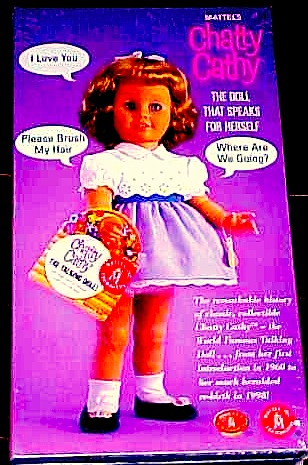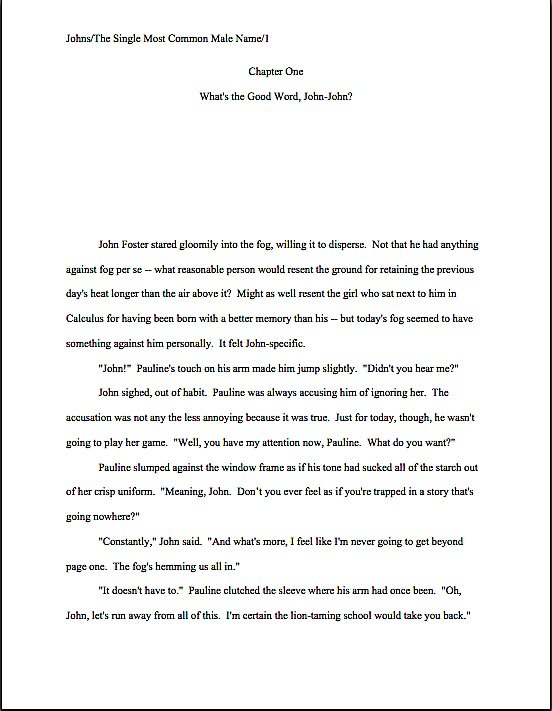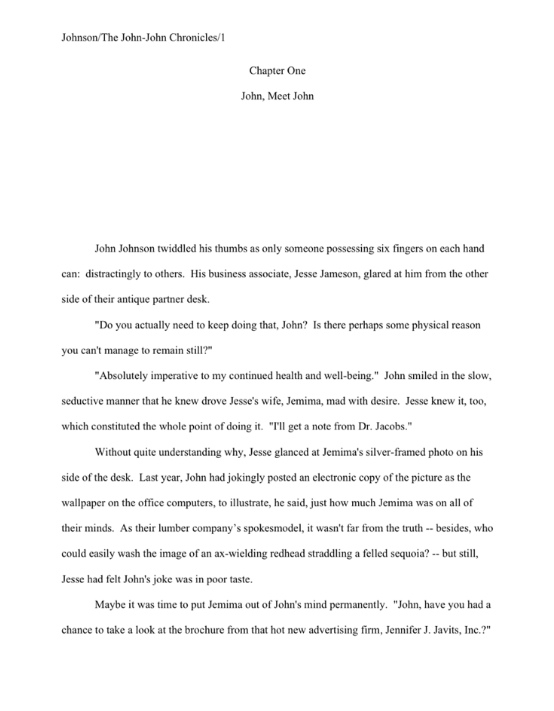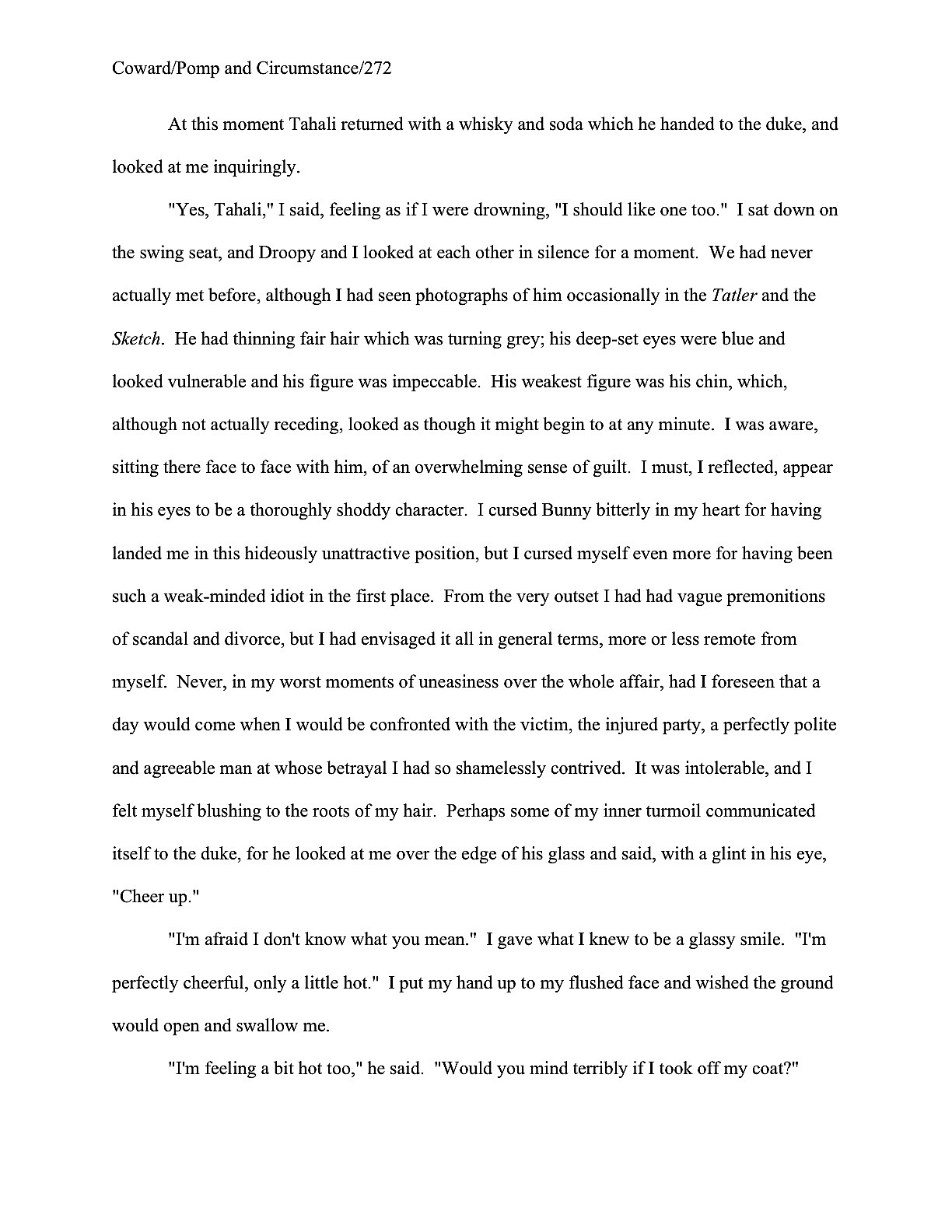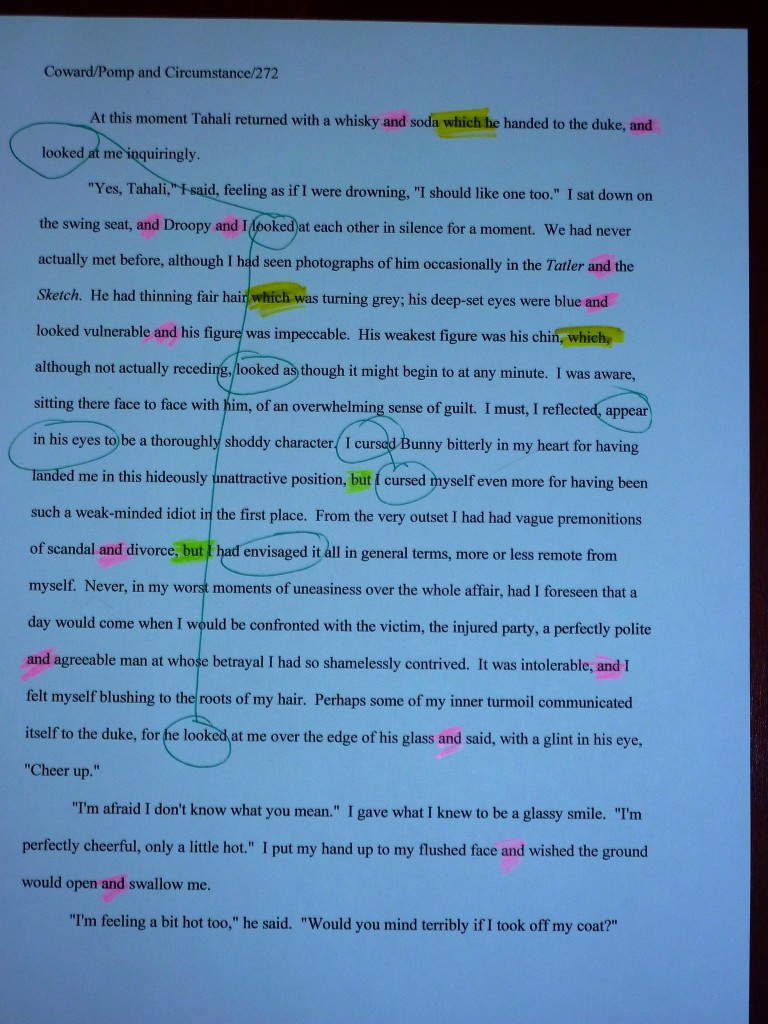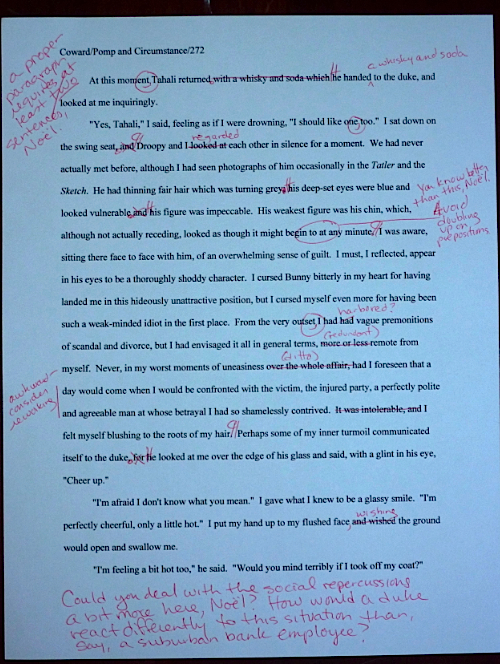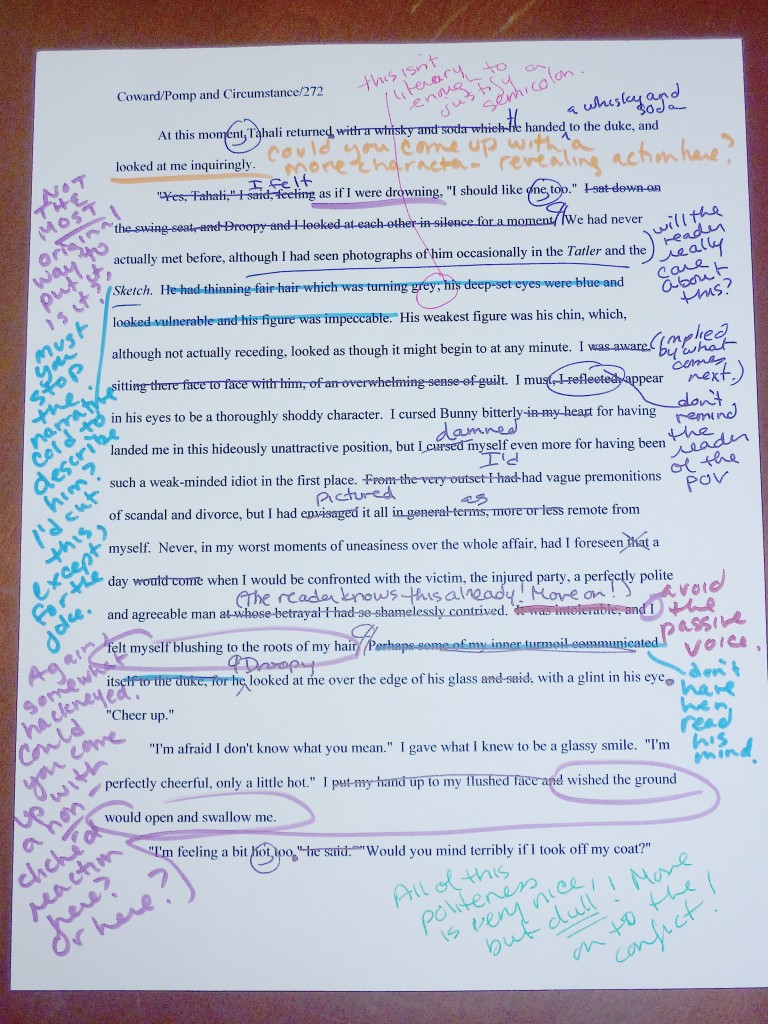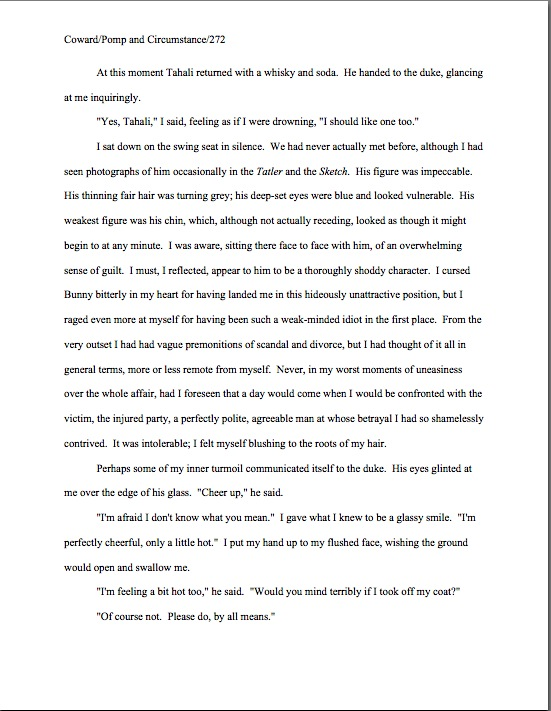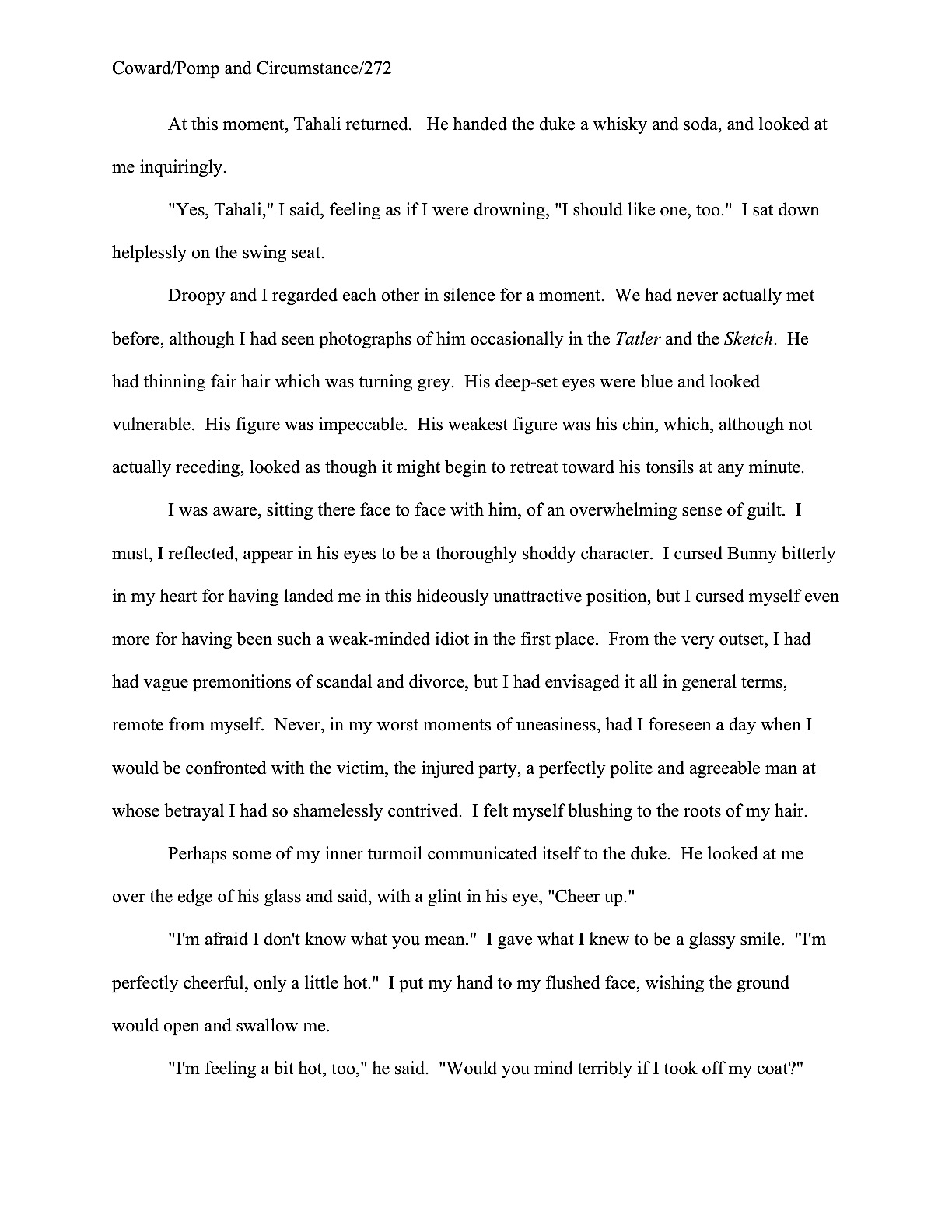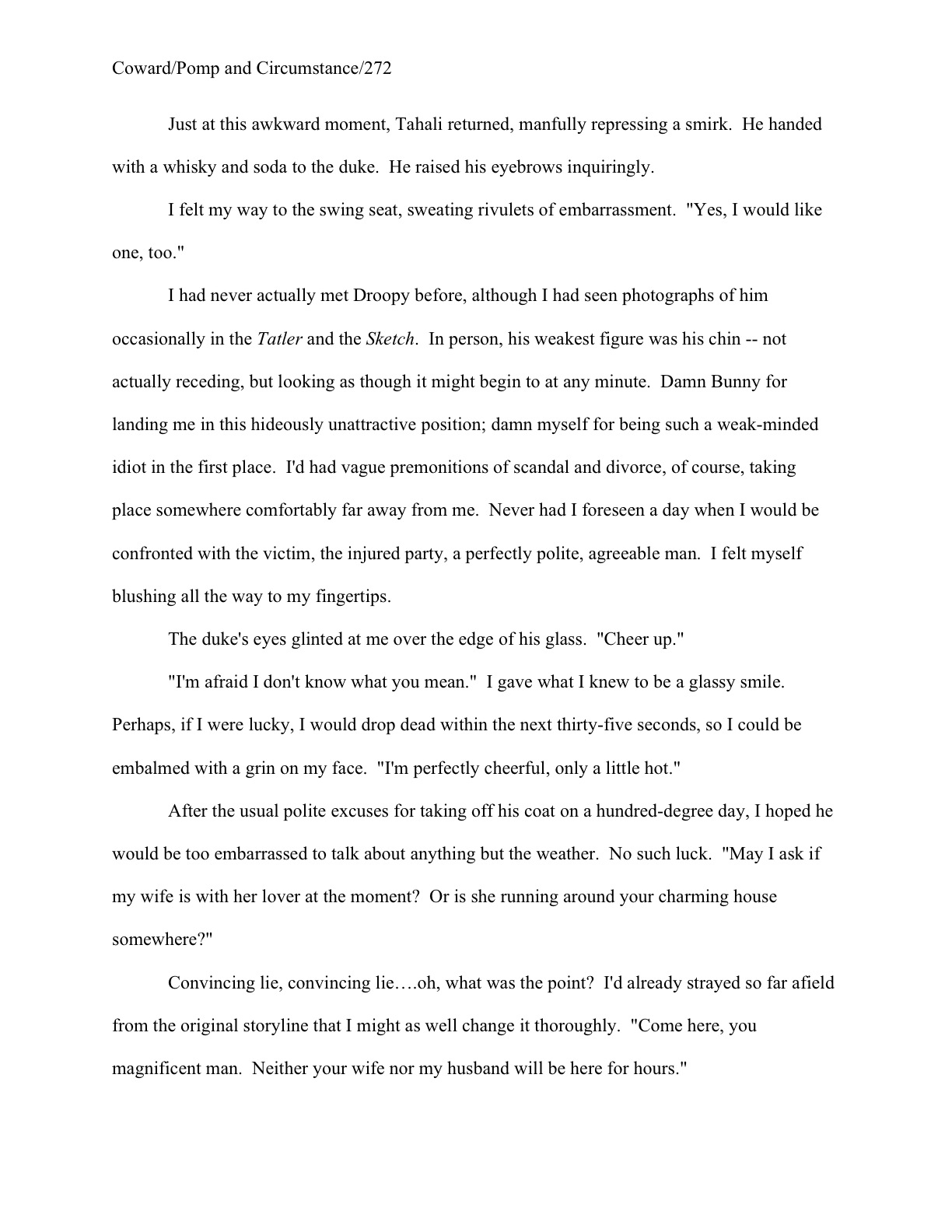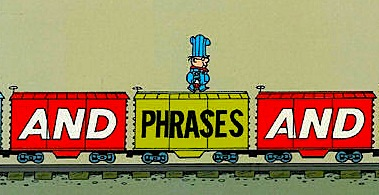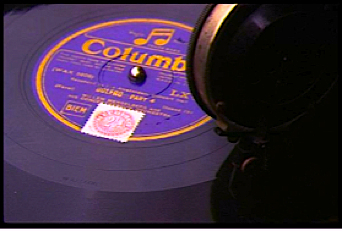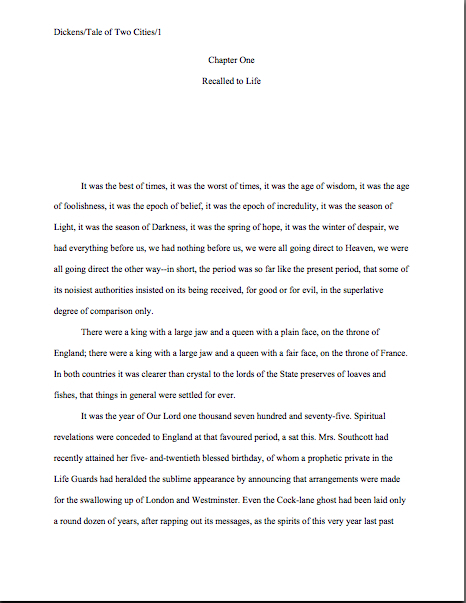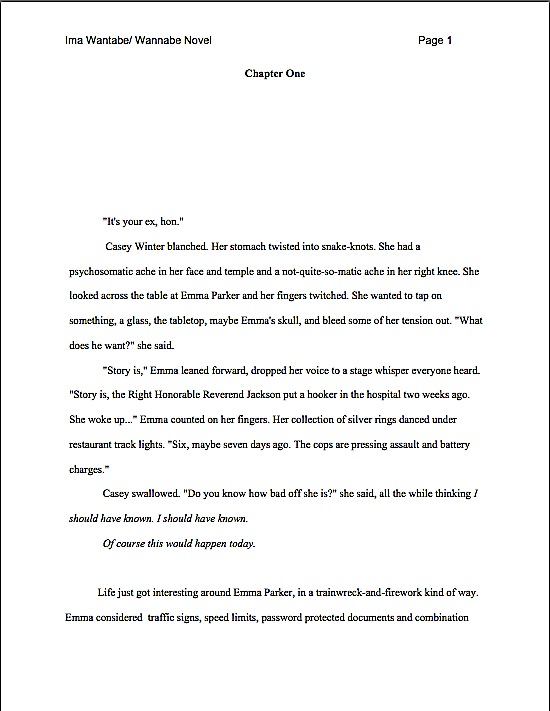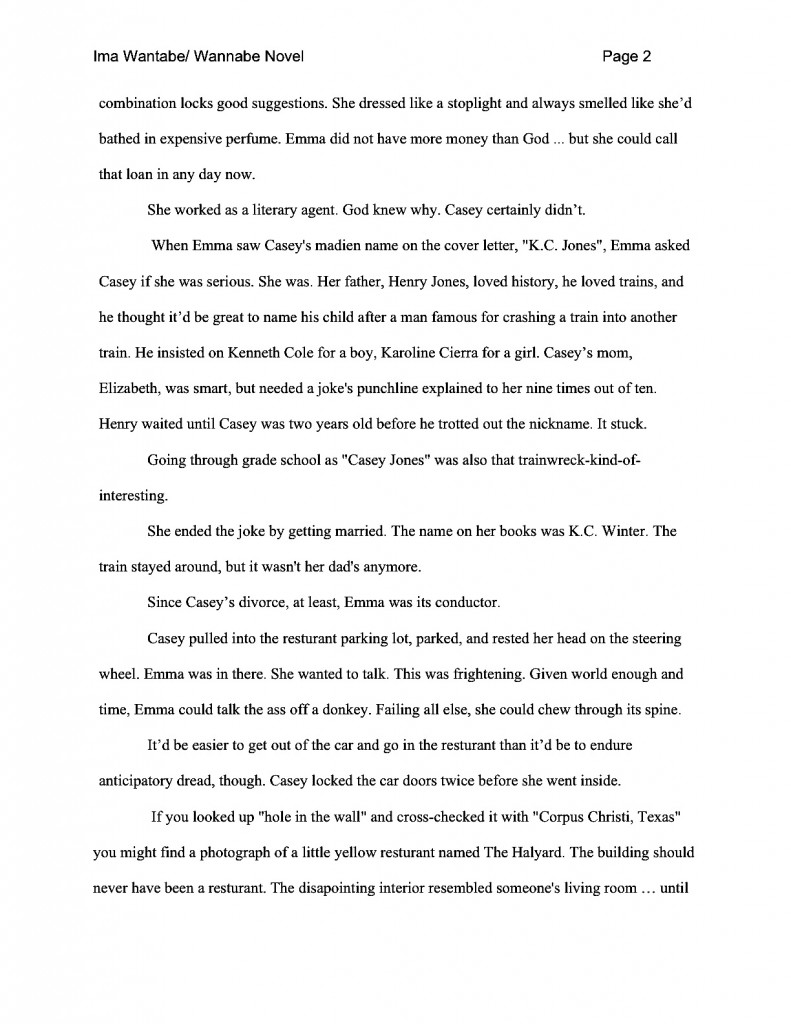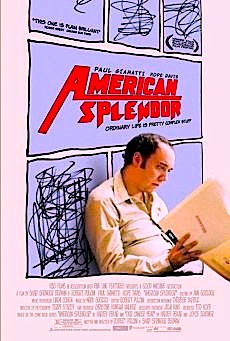
I am genuinely sad to record the passing of graphic novel pioneer Harvey Pekar. His intensely-observed presentations of both the most mundane and most trying aspects of everyday life not only stretched his genre, but demonstrated time and time again that accounts of ordinary life need not be ordinary.
I’m morally sure that Mssr. Pekar would have enjoyed the irony of his having joined the choir invisible right in the middle of our discussion of real-life vs. real-sounding dialogue. As any fan of OUR CANCER YEAR (co-written with his wife, Joyce Brabner) could tell you, he relied very heavily upon actual speech — something substantially easier to pull off when animation appears side-by-side with words on the printed page. Yet just when the dialogue seemed most mundane, one of his quirky characters would come out with a zinger:
“15 amps…15 amps! That’s all we’ve got, and I bet my computer uses half that. This place is a fire trap. You know what’s behind this wall? All our wiring is still in its original paper insulation. Melting copper, wrapped with newspaper. With headlines that read, ‘Jack the Ripper Still at Large!’”
That may sound like the extempore chat of any exasperated person, but as we discussed last time, simply transcribing actual speech is not usually the best — and certainly not the only — means of producing realistic dialogue on the page. There’s nothing wrong per se with lifting quotes from real life, but a savvy writer lifts selectively, judiciously.
And always, always with a definite point in mind. Dialogue that apparently serves no other purpose than to demonstrate that the writer is aware of normal, everyday speech tends to provoke an undesirable speech pattern in our old pal, Millicent the agency screener: “Next!”
Especially if, as often occurs in the opening pages of novel submissions, that meticulously-reproduced everyday speech either delays the action from beginning, slows down action already in progress, or — and Millicent sees this more than any of us might like to think — it takes the place of action happening offstage, so to speak. Many a potentially exciting opening scene has been smothered by the protagonist stopping to be polite — or just chatty.
Not sure what I mean? Okay, here are a couple of openings for the same story, each cut off at the point at which Millicent probably would have stopped reading. (Hey, you think it’s easy to come up with fresh examples night after night?)
“Why, Kathy!” Evan exclaimed. “I thought you weren’t going to make it?”
Well might he have asked. Kathy was not the sort of girl who typically turned up in dank attics, covered with cobwebs, soaking wet, and shaking with fear.
Still, her mother had brought her up right. “Hello, Evan. I thought you were going to Sharon’s party tonight.”
“My date came down with the flu.”
“That’s a shame. And after you got all dressed up, too.”
Evan glanced down at his normally spotless khakis. Climbing up that trellis might not have been such a good idea. He’d have to sneak his pants into the wash before Mom saw them, or he’d be in for it. “I hadn’t expected company.”
Kathy looked away. “Can you tell me what the Algebra homework
was?”
A trifle annoying, isn’t it? It’s fairly obvious that something has happened to Kathy just before the scene we’re seeing, but all of the narrative’s energies seem aimed toward delaying showing us what that something was. (And what is that called, campers? That’s right: false suspense.) Other than slowing the action, keeping the reader from knowing what’s going on, and probably pushing off the first scary happening of the book for a few pages, what purpose is this dialogue serving?
Before you answer, let me caution you that from Millicent’s perspective, but people really talk like that! is not a sufficient answer. Yes, two teenagers running into each other in a haunted house late at night might conceivably say things like this, but why does the reader need to see them say it?
Actually, why does the reader need to see this character say that? is a pretty good question for the reviser of a Frankenstein manuscript to ask early and often, especially when going over a scene that doesn’t go much of anywhere for a third of a page or more. (Hey, Millicent often doesn’t read more than that before deciding to reject a manuscript. Screeners read fast.) In a good submission or contest entry, there’s no such thing as a throw-away line, after all.
As we discussed yesterday, any line of dialogue unequivocally worth keeping exhibits one or more of the following characteristics: it either advances/complicates/resolves a plot point, reveals some interesting and relevant aspect of a character previously unseen in the book, or is interesting, amusing, and/or entertaining in its own right. As the closer readers among you may have noticed, practically none of the dialogue in the example above rises to any of these challenges.
So what’s a savvy reviser to do? Well, we have a number of options. We could back the timeline up a bit, to begin with an interesting character in an interesting situation.
Kathy felt fingers running gently through the sweaty tendrils on the back of her neck. So Evan did like her enough to meet her in the haunted house at midnight. “I don’t scare that easily.”
He didn’t answer. She tilted her head, resting it on his caressing hand. It was ice-cold. And bonier than she remembered.
“Okay, enough with the Halloween jokes.” She wiggled in his grasp. He was surprisingly strong for a chess club captain. “Your girlfriend may like this kid stuff, but…”
The side of her head hit the claw-footed bathtub so hard that she saw stars. She’d always thought seeing stars was a myth, just like the Holton Hall ghost. Water flowed over her face, smothering any further thought but escape.
Gets right to the point, doesn’t it? Thinking objectively, which opening would be more likely to spur you to keep reading, this or the first version?
And THAT is why, in case you were curious, writing gurus urge students to begin their works with a hook, to establish interest right away. But capturing a reader’s interest — particularly a professional reader’s interest — is not like tag: once you’ve hooked ‘em, they don’t necessarily remain hooked. Think of maintaining interest as being akin to love: no matter how hard someone falls for you at first, if you do not keep wooing, that interest is going to flag sooner or later.
Too many aspiring writers take their readers’ interest for granted, an often-costly assumption. So let’s talk wooing strategy.
In the industry, the standard term for what keeps a reader turning pages is tension. All too frequently, writers new to the game confuse it with suspense, but suspense is plot-specific: a skillful writer sets up an array of events in such a way as to keep the reader guessing what will happen next. In a suspenseful plot, that writing-fueled curiosity keeps the reader glued to the page between plot points.
Suspense, in other words, is why one doesn’t get up in the middle of a Hitchcock film to grab a bag of baby carrots from the fridge, unless there’s a commercial break. You want to see what is going to happen next.
Tension, on the other hand, can stem from a lot of sources, mostly character-generated, rather than plot-generated: the reader wants to know how the protagonist is going to respond next, a different kettle of fish entirely. Sometimes tension-rich dilemmas are plot points, but not always – and this gives the writer a great deal of freedom, since it’s a rare plot that can maintain a major twist on every page.
Or even every other page. (THE DA VINCI CODE, anyone?)
Some of the greatest contemporary examples of consistent tension in novels are the HARRY POTTER books. Actually, not a lot happens in most of the books in this series, particularly in the early chapters: kids go to school; they learn things; they have difficulty discerning the difference between epoch-destroying evil and a teacher who just doesn’t like them very much; Harry saves the world again.
Of course, the lessons they learn in the classroom ultimately help them triumph over evil, but that’s not what makes the HARRY POTTER books so absorbing. It’s the incredibly consistent tension. If J.K. Rowling’s publisher infused each page with heroin, rather than with ink, her writing could hardly be more addictive; there’s a reason that kids sit up for a day and a half to read them straight through. With the exception of the first 50 pages of the last book (hey, I’m an editor: it’s my job to call authors on their writing lapses), the tension scarcely flags for a line at a time.
Technically, that’s a writing marvel, a achieved not by magic, but by doing precisely the opposite of what the movie and TV scripts with which we’re all inundated tend to do: she gives her characters genuine quirks substantial enough to affect their relationships and problems that could not be solved within half an hour by any reasonably intelligent person.
Rather than making the reader guess WHAT is going to happen next, well-crafted tension lands the reader in the midst of an unresolved moment — and then doesn’t resolve it immediately. This encourages the reader to identify with a character (usually the protagonist, but not always) to try to figure out how that character could get out of that particular dilemma. The more long-term and complicated the dilemma, the greater its capacity for keeping the tension consistently high.
A popular few: interpersonal conflict manifesting between the characters; interpersonal conflict ABOUT to manifest between the characters; the huge strain required from the characters to keep interpersonal conflict from manifesting. Also on the hit parade: sexual energy flying between two characters (or more), but not acted upon; love, hatred, or any other strong emotion flying from one character to another, spoken or unspoken. Or even the protagonist alone, sitting in his room, wondering if the walls are going to collapse upon him.
Come to think of it, that’s not a bad rule of thumb for judging whether a scene exhibits sufficient tension: if you would be comfortable living through the moment described on the page, the scene may not provide enough tension to keep the reader riveted to the page. Polite conversation, for instance, when incorporated into dialogue, is almost always a tension-breaker.
“But wait!” I hear some of you slice-of-life aficionados out there cry. “I hate to be redundant with the questions, but shouldn’t dialogue EVER reflect how people speak in real life?”
Well, yes and no. Yes, it should, insofar as good dialogue reflects plausible regional differences, personal quirks, and educational levels. I’ve heard many an agent and editor complain about novels where every character speaks identically, or where a third-person narrative reads in exactly the same cadence and tone as the protagonist’s dialogue. Having a Texan character use terms indigenous to Maine (unless that character happens to be a relative of our last president’s, of course) is very likely to annoy a screener conversant with the dialect choices of either area.
Yes, Virginia, the pros honestly do notice these little things. That’s one of the many, many reasons that it is an excellent idea for you to read your ENTIRE submission IN HARD COPY and OUT LOUD before you mail or e-mail it off; it really is the best way to catch this flavor of writing problem.
But it’s just a fact of the art form that the vast majority of real-life dialogue is deadly dull when committed to print. While the pleasantries of manners undoubtedly make interpersonal relationships move more smoothly, they are rote forms, and the problem with rote forms is that utilizing them absolutely precludes saying anything spontaneous. Or original.
Or — and this is of primary importance in a scene — surprising. Think about it: when’s the last time someone with impeccable manners made you gasp with astonishment?
Even rude real-life conversation can be very dull on the page. If you don’t believe this, try this experiment:
1. Walk into a crowded café alone, sit down at a table near a couple engaged in an argument (not all that difficult to find, alas) and start taking notes.
2. Go home and write up their actual words — no cheating — as a scene.
3. Read it over afterward. Does it work dramatically? Is it character-revealing? Or do these people sound generic and their bickering dull?
99% of the time, even if the couple upon whom you eavesdropped were fighting or contemplating robbing a bank or discussing where to stash Uncle Harry’s long-dead body, a good editor would cut over half of what the speakers said. And if the two were in perfect agreement, the entire scene would probably go.
Why? Because real-life conversation is both repetitious and vague, as a general rule. It also tends to be chock-full of clichés, irrelevancies, non sequiturs, jokes that do not translate at all to print, and pop culture references that will surely be outdated in a year or two.
In a word: boring to everyone but the participants. It’s an insult to the art of eavesdropping.
So is, incidentally, dialogue that insists upon showing the reader every pause or hesitation, however miniscule. Contrary to popular belief amongst aspiring writers, the mere fact that a speaker stops saying anything for a moment is not invariably important enough to record for posterity. Nor is it, in itself, interesting.
You’re not believing me again, aren’t you? Okay, smarty pants, take a gander at this relatively commonplace example of this type of dialogue.
Sheila stopped in mid-step. “Edmond, what’s wrong? Are you…”
He hesitated before answering. “I’m fine. Just a minor arrhythmia.”
“But are you…I mean, is it something we need to worry about?”
“You worry too much, Sheila.” He paused. “But I should probably get to…a doctor. Or even…a hospital?”
“A hospital!” She couldn’t say anything else for a second. Then she grew brisk: “Edmond, you’re not…thinking clearly. I’m taking you to the emergency room, now.”
“But…”
“But me no buts. Do you need to lean on me to get to the car?”
Quite heavy ellipsis for just a few lines of text, isn’t it? Apart from being repetitive on the page, all of those dots aren’t really adding much to the scene. As those of you who are editing for length will be delighted to see, most of them could be cut entirely without changing the conflict or decreasing the tension of the scene at all.
Look at how painlessly those pauses may be minimized — and while we’re at it, let’s excise some of that redundancy as well:
Sheila stopped in mid-step. “Edmond, what’s wrong?”
“I’m fine. Just a minor arrhythmia.”
“Is it something we need to worry about?”
“You worry too much, Sheila.” He took in a shuddering breath. “But I should probably get to a doctor. Or even a hospital.”
She grew brisk: “I’m taking you to the emergency room, now.”
“But…”
“But me no buts. Do you need to lean on me to get to the car?”
See? All I retained was one reference to stopping and one ellipsis — but the scene is, if anything, more full of tension than when Sheila and Edmond were wasting all of our time by speaking so slowly.
That’s right, those of you who just gasped — I did say that wasting our time. Professional readers aren’t the only ones who tend to bore quickly when faced with dialogue whose primary recommendation is realism.
“But Anne,” the gaspers protest, “I thought the point of good writing was to show the reader the world as it actually is! If their eyes are going to glaze over just because I show a pause or two — which actual people do all the time in the real world, by the way — or include a few pleasantries, how is it going to be remotely possible for me to tell the realistic tale I want to tell?”
It’s more than remotely possible, reality-lovers — it’s probable, provided that you concentrate on what is surprising and interesting about that tale. Usually, the best way to achieve this is to focus upon what is unique about your self-described ordinary characters, rather than how they are just like everybody else.
That’s a taller order than it might at first appear, from an editing perspective. Far too often, slice-of-lifers and Everyman-producers will not differentiate between the expected ordinary details and the specific quirks of individual characters; their Frankenstein manuscripts tend to include everything, up to and including the kitchen sink. The trick to revising such text is to winnow out what the reader might expect to be there, so the genuinely unusual personalities of your real-life characters can shine forth.
Strong character development is as much about what the writer chooses to leave out as what s/he elects to leave in, after all. Mundane, predictable statements, however likely characters like yours may be to utter them in real life, seldom reveal much about the speaker’s personality, do they?
And that’s doubly true if more than one character says the same types of things. Yes, real people do frequently echo their kith and kin in real life, but unless you prefer to define true-to-life as synonymous with dull, I have too much faith in your creativity to believe that you can’t come up with something different for each character to say.
The same holds true for individual quirks. The more seemingly ordinary your protagonist, the more you ought to consider giving him a unique trait or two. Remember, one reader’s Everyman is another’s Ho-Hum Harry.
Ah, the gaspers seem to have caught their breath again. Yes? “But Anne, what you’re saying is problematic, frankly, to most of us who have lived through Creative Writing 101. Weren’t we all told to strive for universality in our prose? Weren’t we all ordered to write what you know? Weren’t we implored to be acute observers of life, so we could document the everyday in slice-of-life pieces of practically museum-level detail? I can’t be the only one who had this writing teacher, can I?”
Unfortunately, no — judging by contest entries and submissions, quite a few writers did. But let’s pause for a moment — you’ll like that, won’t you, slice-of-lifers? — to consider just how reflective of real life those Writing 101 standards actually were. Universality, until fairly recently, was code for appealing to straight, white men; exhortations to write what you know led to forty years’ worth of literary journals crammed to the gills with stories about upper middle-class white teenagers, mostly male. And the popularity of the slice-of-life short story (it’s awfully hard to maintain for an entire novel) left many of us sitting in writing class, listening to aspiring writers read thinly-fictionalized excerpts from their diaries.
Unfortunately, from Millicent’s point of view, all of the good students obediently following this advice has resulted in a positive waterfall of submissions in which, well, not a whole lot happens. Every day, she reads of universal protagonists (read: ordinary people) in situations that their authors know intimately (read: ordinary life) acutely observed (read: the ordinary seen through a magnifying glass).
It’s not that some of these many, many stories aren’t well-written; many of them are. And there’s nothing wrong with portraying all of that ordinariness, per se. It’s just that Millicent sees so darned much of it that it’s hard for an average Joe or Jane protagonist in an ordinary situation not to strike her as…
Well, you get the picture.
Whether that slice-of-life story is presented as fiction or memoir (a book category where it tends to work better on the page), ordinary characters may never be excused for being dull or predictable. Not in a manuscript submission, not in a contest entry, and not in a published book. Millicent is screening to find the extraordinary manuscript, the one with the fresh worldview, spin, or writing style applied to a story about a character (or characters) who are different enough from character(s) she’s seen before to remain interesting for the length of an entire book.
Aspiring writers, particularly memoirists, often seem to fail to take that last part into account when preparing their submissions: if the story presented does not appear from the very first line on page 1 to be about a fascinating person in an intriguing situation, the manuscript is going to be a tough sell to everyone from Millicent to her boss to an editor at a publishing house to a contest judge.
So if a book is about an Everyman living a life with which an ordinary reader might identify, it’s IMPERATIVE that he demonstrate some way in which either he or his story is not ordinary right away. Why? Because otherwise, the manuscript is far too likely to get dismissed as just not very interesting or surprising.
It’s not for nothing, you know, that agents complain about how many submissions they see that took too long for anything to happen, along with its corollary, the story took too much time to warm up, as well as the ever-popular not enough action on page 1. These complaints are reflective of the hard reality they see on a daily basis: many, if not most, first pages have no conflict on them at all, but are purely set-up.
Such an opening scene may be beautifully-written, lyrical, human life observed to a T. But from the business side of the industry’s perspective — and, despite the fact that agents are essentially the first-level arbiters of literary taste these days, they need to be marketers first and foremost, or they are of little use to those they represent — a slow opening translates into hard to sell.
The ordinariness of characters, that is, is something that comes up again and again in agents’ discussions of what they are seeking in a manuscript. An interesting character in an interesting situation is featured in practically all of their personal ads advice on the subject, particularly if the protagonist is not the character one typically sees in such a situation. A female cadet at a prestigious military academy, for instance. A middle-aged stockbroker arrested for protesting the WTO. A veteran cop who is NOT paired in his last month of duty with a raw rookie.
That sort of thing. In Millicent’s world, interesting and surprising are synonymous more often than fans of the ordinary might think.
So while a very average character may spell Everyman to a writing teacher, an average Joe or Joanna is typically a very hard sell to an agent. As are characters that conform too much to stereotype. (How about a cheerleader who isn’t a bimbo, for a change? Or a coach who isn’t a father figure to his team? A mother who doesn’t sacrifice her happiness for her kids’?)
So I ask you: isn’t it possible for you to work an element of surprise onto page 1 of your submission, the best place to catch an agent’s eye?
Before you chafe at that request, remember that lack of surprise can render a protagonist less likable, even for readers who do not, like Millicent, drop a book like a hot coal if the first few paragraphs don’t grab them. For some reason I have never been able to fathom, given how often writing teachers lecture about the importance of opening with a hook, this justification for keeping the opening lively is seldom mentioned, but it is in fact true: ordinary characters tend not to be all that engaging, precisely because they are average, and thus predictable.
For most readers, an unpredictable jerk is more interesting to follow than a beautifully-mannered bore, after all. It’s hard to blame Millicent and her cronies for that.
Or if it won’t work in your story to open with something surprising, how about vitally important? I don’t necessarily mean important on the global scale, but within the world of the story you’re telling.
Seriously, one of the best ways of preventing your protagonist from coming across as too average is to elevate the importance of what is going on in the opening to that character. A protagonist or narrator’s caring passionately about the outcome of a conflict practically always renders a scene more interesting, because it prompts the reader to care about the outcome, too. (Of course, this is a whole lot easier to pull off in an opening scene that features a conflict, right?)
Whatever you revisers of Frankenstein manuscripts do, however, do not under any circumstances allow the reader to become bored for even so much as a sentence of page 1. Or to be able to predict what the next line of dialogue will be. If your current opening scene cannot be edited to avoid both of these dreadful fates, consider beginning your submission with a different scene.
I ask you again: were you drawn into Kathy’s story faster when you saw her attacked by a water-loving ghost, or when she was chatting with a classmate after she’d fought off the spook?
Believe me, “boring” is absolutely the last adjective you want to spring to Millicent’s mind while she’s perusing your work. Even “annoying” is better, because at least then the manuscript is eliciting a reaction of some sort. But once the screener has a chance to think, “I’m bored with this,” if the next line does not re-introduce tension, chances are that the submission is going to end up in the reject pile.
That’s the VERY next line; you can’t count upon your manuscript’s ending up on the desk of someone who is going to willing to be bored for a few paragraphs. Or hadn’t I mentioned that as a group, professional readers bore fast.
Try not to hold it against them. I’ve read enough manuscripts in my time to understand why: the vast majority of manuscripts suffer from a chronic lack of tension.
Dull dialogue that does not reveal interesting things about the characters saying it is a primary culprit. I know, I know, being courteous seems as though it should make your protagonist more likable to the reader, but frankly, “Yes, thank you, George,” could be spoken by anyone. It doesn’t add much to any scene. And reading too many pages of real-life dialogue is like being trapped in a cocktail party with people you don’t know very well for all eternity.
“Deliver us from chit-chat!” the Millicents moan, rattling the chains that shackle them to their grim little desks clustered together under those flickering, eye-destroying fluorescent lights. “Oh, God, not another attractive stranger who asks, ‘So, have you been staying here long?’”
You’re just the writer to answer their prayers, aren’t you? Keep up the good work!
